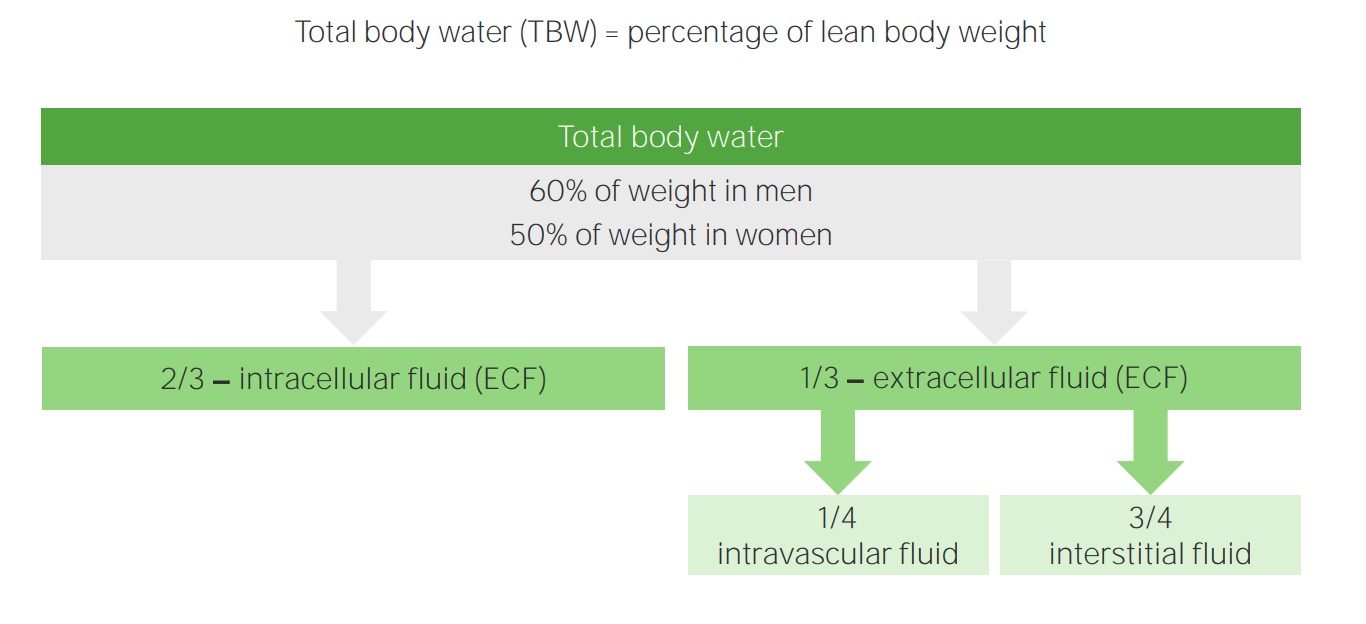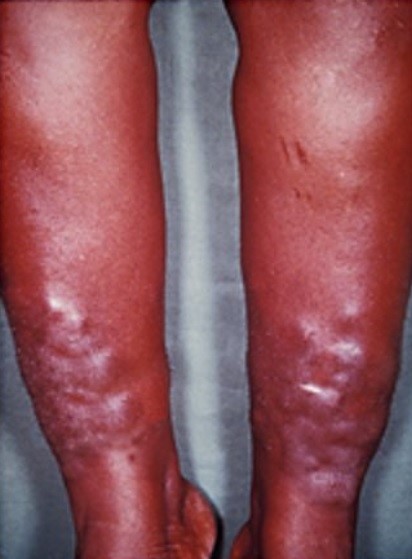Playlist
Show Playlist
Hide Playlist
Starling's Law of the Capillary
-
Slides 14 VascularMedicine advanced.pdf
-
Reference List Vascular Medicine.pdf
-
Download Lecture Overview
00:01 You may remember when we talked about capillary function, fluid is released from the capillaries at the arteriolar side because the pressure in the capillary – the hydrostatic pressure – is higher than the oncotic pressure from the proteins in the blood. 00:18 At the other end, at the venule end, the oncotic pressure is a little higher than the hydrostatic pressure. But you’ll remember when we reviewed this that actually there is still a little bit of advantage for hydrostatic pressure so a tiny amount of fluid continues to leak out of the capillaries. 00:39 And remember this was Starling’s law of the capillary. And so you do need the lymphatics because you want something to drain that little bit of tissue fluid, also called interstitial fluid, in between the cells. And that leads then to a balance in the cardiovascular system. 01:02 Remember: hydrostatic pressure a little higher at the arteriolar end, oncotic a little higher at the venous end but overall a tiny advantage to hydrostatic pressure so that a small amount of fluid escapes from the capillary into the tissue space. And the lymphatics take this fluid away from the tissues and bring it back to the bloodstream. 01:26 So how do we get the fluid to flow through the lymphatic system? Well it’s a system very similar to the veins. First of all, the small lymph vessels have valves, just like veins. Their muscle pumping squeezes the lymphatics, pushing the fluid up in the right direction. When you take a deep breath, you have negative pressure in your chest and that tends to suck the fluid up in the lymph vessels. And many of the larger lymph vessels have smooth muscle so, just like the veins, they contract a little bit. 02:01 All of these processes move the lymph from the tissues up into the large veins in the chest where they’re returned to the cardiovascular system – to the blood. 02:11 So, again, we start with lymph capillaries draining lymph. They collect in larger lymph vessels known as lymphatics. These larger ones have a little bit of smooth muscle. And then eventually they feed into very large lymph vessels in the chest that feed into the veins. 02:33 Large lymph-collecting vessels connect to the venous system in the chest: on the right side to the subclavian vein, on the left side they return into the superior vena cava. 02:45 As the lymph capillaries proceed towards the chest, they’re joined by other capillaries growing larger and larger. They develop smooth muscle, they develop adventitia. In other words, they look a lot like veins but they’re smaller.
About the Lecture
The lecture Starling's Law of the Capillary by Joseph Alpert, MD is from the course Diseases of the Lymphatic System.
Included Quiz Questions
Which of the following statements concerning Starling’s law of the capillary exchange is NOT correct?
- Fluid is pulled into the capillary from the interstitial space.
- Hydrostatic pressure inside the capillary is higher at the arteriolar end of the capillary.
- Oncotic pressure inside the capillary is higher at the venule end of the capillary.
- Small amounts of fluid leak out of the capillary into the interstitial space.
Customer reviews
5,0 of 5 stars
| 5 Stars |
|
5 |
| 4 Stars |
|
0 |
| 3 Stars |
|
0 |
| 2 Stars |
|
0 |
| 1 Star |
|
0 |





